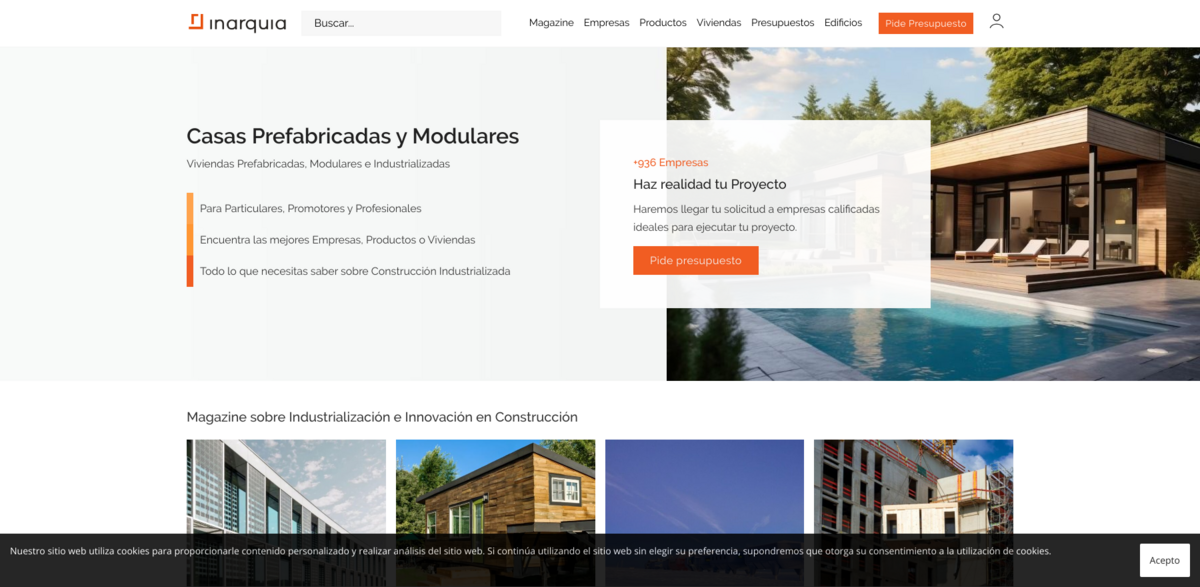What Industrialization and Innovation Mean for Construction
Industrialization and innovation in construction are shaking up the sector, driving a digital transformation that’s all about efficiency and energy savings. The construction world is embracing new technologies and processes to keep pace with modern demands. In Spain, for example, industrialized housing manufacturing is pushing for a smarter, more streamlined construction process. It’s about rationalizing and improving every step to boost productivity and competitiveness. This means tapping into artificial intelligence, 3D modeling, fresh materials, and other cutting-edge solutions. The goal? To spark creativity, foster collaboration, and raise the sector’s profile internationally. It’s a big shift from traditional methods, aiming to build a culture where innovation and digitization lead the way.
Main Benefits of Industrialization in Construction
Here’s a quick rundown of the key benefits that industrialization brings to the table:
- Increased efficiency and productivity through streamlined processes
- Higher precision and quality control thanks to technologies like 3D modeling
- Reduced labor costs and project timelines via prefabrication
- Enhanced sustainability by minimizing environmental disruption
- Improved collaboration among stakeholders, including administrations
- Promotion of continuous learning and professionalization in the sector
- Boosted competitiveness and innovation through calculated risk-taking
Technologies Revolutionizing Construction
The construction sector is no stranger to tech, but today’s advancements are truly game-changing. Building Information Modeling (BIM), robotics, and the Internet of Things (IoT) are transforming how projects are planned and executed. Prefabricated construction, where components are built off-site and assembled on-site, is a standout method that cuts down on labor and speeds things up. Robotics handle repetitive tasks with speed and accuracy, while drones offer fresh eyes for surveying and inspections. Then there’s 3D printing, which is turning heads by enabling the rapid creation of complex structures in various materials. And IoT? It’s weaving smart sensors into buildings to monitor everything from temperature to security, making maintenance predictive and energy management smarter.
The Game-Changing Impact of 3D Modeling
3D modeling has completely flipped the script on how construction projects are visualized and developed. Architects and engineers can now create detailed virtual models that offer a crystal-clear preview of the final build. This precision cuts down on errors and rework, saving time and money. Plus, it lets teams assess environmental impacts early on, promoting greener construction practices. Beyond just visuals, 3D modeling boosts communication and teamwork, reducing confusion and aligning all parties. It also encourages integrating systems like HVAC, electrical, and plumbing into cohesive, sustainable designs. Simulating different scenarios means smarter planning and fewer surprises down the line.
Building a Culture of Innovation and Collaboration
Industrialization isn’t just about tech—it’s a mindset shift. The construction sector is moving away from old-school methods, embracing creativity and cooperation. Companies are taking smart risks to pioneer new solutions, while educational programs are stepping up to equip professionals with the right skills. This culture of innovation is essential for tackling challenges and staying ahead. It’s about creating standardized, efficient procedures that streamline projects from start to finish. Collaboration with government bodies and exploring novel materials also play a big role in this transformation. Together, these efforts are setting the stage for a more dynamic, competitive construction industry.
Project Impact on Sustainable Development Goals (SDGs)
- SDG 9: Industry, Innovation, and Infrastructure – driving modernization and innovation in construction
- SDG 11: Sustainable Cities and Communities – promoting eco-friendly building practices
- SDG 12: Responsible Consumption and Production – encouraging efficient use of resources
- SDG 13: Climate Action – reducing environmental impact through sustainable construction
- SDG 4: Quality Education – fostering professional development and training in the sector
The Future of Construction: Efficiency, Sustainability, and Growth
Looking ahead, the construction sector’s embrace of industrialization and innovation promises a brighter future. By adopting modern technologies and reshaping traditional workflows, the industry can boost competitiveness and sustainability. The integration of IoT, robotics, and 3D modeling will continue to enhance precision and efficiency. Meanwhile, prefabrication and automation will keep cutting costs and timelines. This evolution isn’t just about building better structures—it’s about building smarter communities and a more resilient industry. The road ahead is full of opportunities for growth, creativity, and positive change.





















